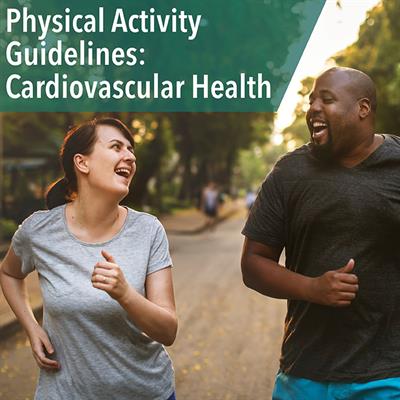William Haskell, Ph.D., FACSM |
July
9, 2019
The second edition of the Physical Activity Guidelines for Americans was published by the Department of Health and Human Services (DHHS) in November 2018. Background data and development procedures were presented at the ACSM Annual Meetings in 2018 and 2019 and were published in Medicine & Science in Sports & Exercise (MSSE) and other major medical journals.
 One significant conclusion of an extensive literature review is that the least active men and women die or become disabled younger and more frequently due to heart disease and other chronic diseases than even their slightly more active peers. What is now well established is that the least active are at greatest risk, and for these people even small amounts of activity performed on most days decreases risk of heart attack, stroke and other chronic conditions such as heart failure, type 2 diabetes and colon cancer.
One significant conclusion of an extensive literature review is that the least active men and women die or become disabled younger and more frequently due to heart disease and other chronic diseases than even their slightly more active peers. What is now well established is that the least active are at greatest risk, and for these people even small amounts of activity performed on most days decreases risk of heart attack, stroke and other chronic conditions such as heart failure, type 2 diabetes and colon cancer.
In people who are somewhat more active but do not meet the core guidelines of 150-300 minutes/week of moderate intensity aerobic activity (or 75-150 minutes per week of vigorous intensity activity) adding more activity throughout the week provides additional health benefits even if they don’t achieve these guidelines. “More is better” applies here for people doing no or very little activity such as walking as well as for people who are doing some but less than the 150-300 minutes/week target.
These new recommendations are based on very large amounts of data published since the 2008 Physical Activity Guidelines for Americans, and they confirm the core recommendations for moderate and vigorous intensity aerobic activity. Members of the Guidelines Advisory Committee reviewed data from numerous studies conducted throughout much of the world including information on people from a wide range of demographics. More activity resulted in lower risk regardless of age, sex, BMI, race/ethnicity and many existing health conditions. Increased physical activity appears to be a central component of maintaining good health for everyone.
Short bouts now count
The key change in the aerobic activity recommendation in 2018 was to remove the “10-minute bout duration requirement.” In prior physical activity guidelines by DHHS, ACSM, CDC and the American Heart Association since 1995, for a bout of aerobic activity to count towards the weekly goal it needed to be at least 10 continuous minutes in duration. In the second edition (2018) DHHS guidelines it states:
Bouts, or episodes of moderate-to-vigorous physical activity of any duration may be included in the daily accumulated total volume of physical activity. The 2008 Physical Activity Guidelines for Americans recommended accumulating moderate-to-vigorous physical activity in bouts of 10 minutes or more because not enough evidence was available to support the value of bouts less than 10 minutes in duration. The 2018 Advisory Committee concluded that bouts of any length contribute to the health benefits associated with the accumulated volume of physical activity. Even a brief episode of physical activity like climbing up a few flights of stairs counts.
This change of not requiring a continuous bout of at least 10 minutes will likely increase time spent being active reported by people who accumulate a lot of activity (usually steps) by moving about frequently but briefly throughout the day (more people will “meet guidelines “ doing what they did before). Also, this change puts a premium on using wearable activity trackers for monitoring activities such as walking or moving about throughout the day as most trackers are designed to record each minute of continuous activity.
Not discussed in the guidelines is how to deal with activity duration collected by self report verses by activity trackers. Research is needed on how MVPA duration accumulated throughout the day collected by self report compares with that recorded by activity trackers. Does the aerobic activity target for good health need to be the same for self report activity and activity recorded using wearable devices?
Learn more about the Physical Activity Guidelines for Americans, Second Edition.
 William Haskell, Ph.D., FACSM, is a Professor of Medicine, Emeritus, at Stanford University in Stanford, California. He is also a member of the Stanford Cancer Institute. Dr. Haskell served as the 27th President of the American College of Sports Medicine from 1983-1984. He presented the D.B. Dill Historical lecture at the ACSM Annual Meeting in 2019. His presentation was titled "Guidelines for Physical Activity and Health:
William Haskell, Ph.D., FACSM, is a Professor of Medicine, Emeritus, at Stanford University in Stanford, California. He is also a member of the Stanford Cancer Institute. Dr. Haskell served as the 27th President of the American College of Sports Medicine from 1983-1984. He presented the D.B. Dill Historical lecture at the ACSM Annual Meeting in 2019. His presentation was titled "Guidelines for Physical Activity and Health:
Evolution Over 50 Years."